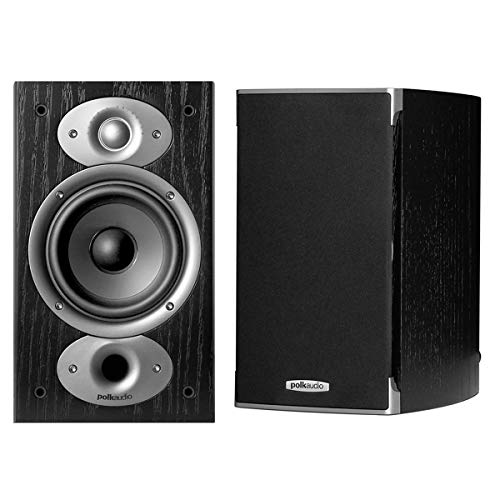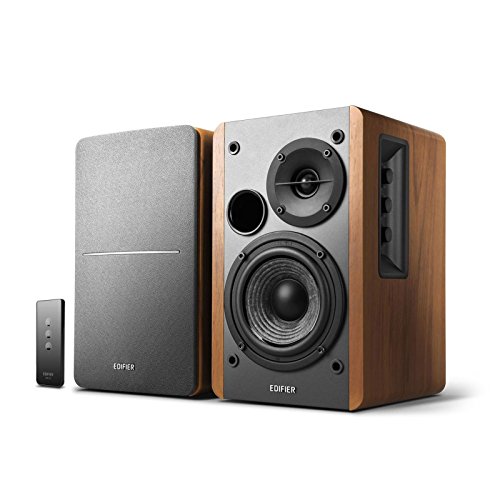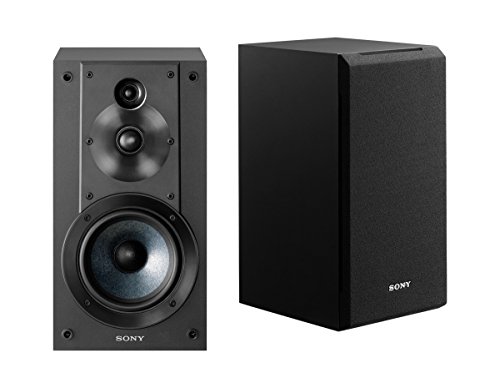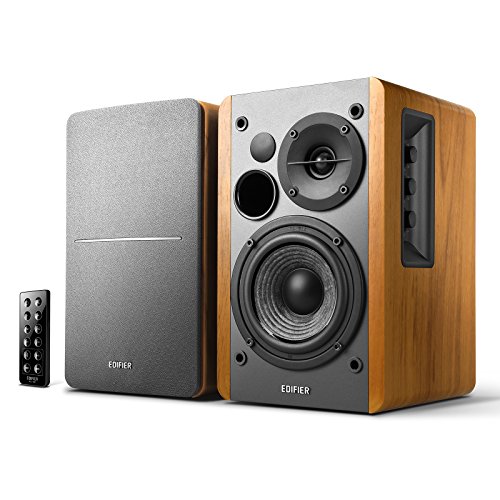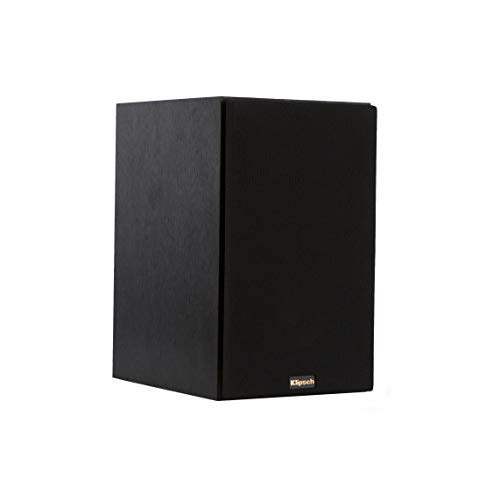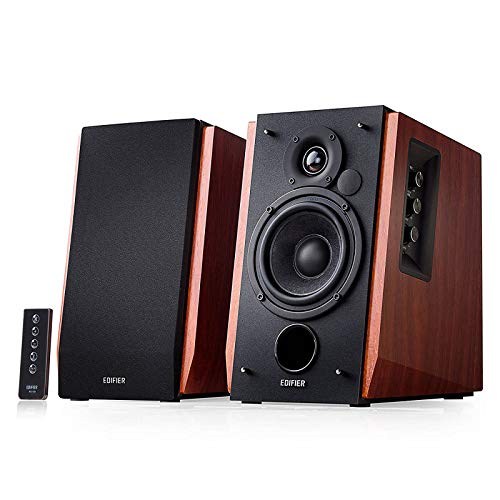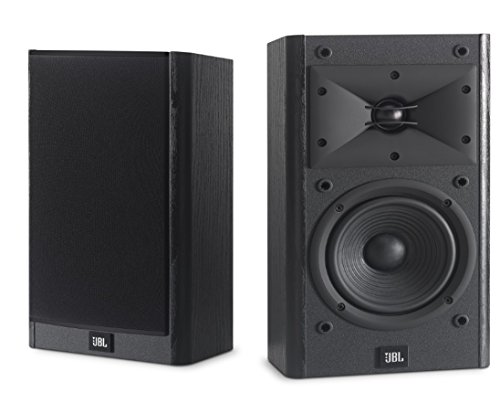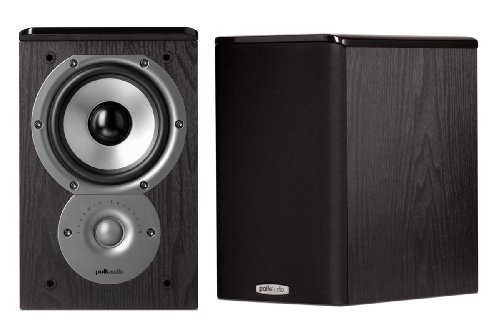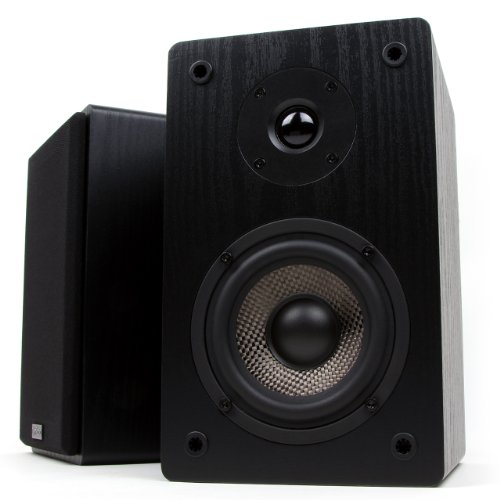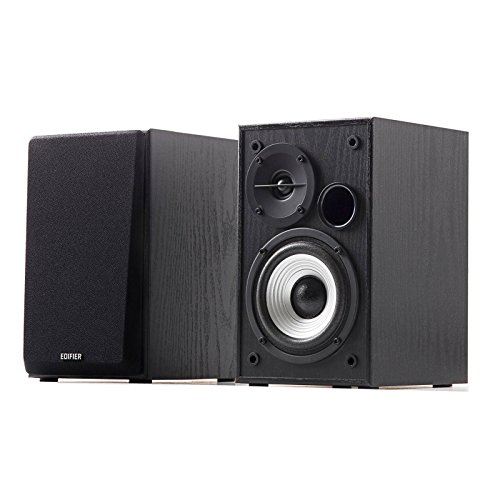We are no strangers to speaker reviews, in fact, we have done so many, that links may be tough to navigate if you're shopping with a budget in mind, so today's reviews have been restricted to the 10 best bookshelf speakers under $200. We are going to examine a selection of passive and active speakers to cater to your different needs.
It probably goes without saying but the market for speakers is very competitive with no shortage of options on offer, so you might be pleasantly surprised at just what your money can get you in this day and age.
Table of Contents
It is important to remember that when you shop within a specific price bracket you typically won't see any mind-blowing differences between products. So we are going to take you through what to expect for your cash, in our complementary buyers guide after our reviews.
Got more budget? Try these bookshelf speakers below 500 dollars, or even these top-quality bookshelf speakers under 1000 bucks.
At a glance: Our top 3 picks
View The Best Bookshelf Speakers Under $200
1. Polk Audio RTI A1
The RTI A1 is the first passive model to kick-start the upgraded RTI A series from Polk Audio. They benefit from newly developed Dynamic Balance cone drivers as well as a more elegant re-imagining of the cabinet style.
The pair are housed in an all wood (MDF) enclosure featuring a Power Port Plus enhancement to the design part of Polks patented power port technology, that improves bass tenfold. It eliminates distortion risk through optimal ventilation.
They are great floor-standing speakers (so technically not a bookshelf pair) which are generously equipped with the upgraded cone drivers, coupled with a dedicated tweeter. The dynamic balance drivers measure 5.25 inches and are a composite, polymer/mineral mix. They provide a dynamic frequency response, crossover smoothly and the 1-inch silk/polymer dome tweeter handles extremely well because of their magnets heat sink.
The magnets are neodymium and the backs employ a low viscosity ferro-fluid to maintain a cool temp at high frequencies. They have a recommended amplification of 20-125 watts per channel.
Pros:
+ Wooden enclosure.
+ Resonance free.
+ 2-way class.
Why We Liked It - They are very well made and hot off of Polks best-selling series, they also come in a range of finishes too.
Wireless - If you are planning to position your bookshelf speakers in a place that does not have easy access to an outlet, you might want to prioritize wireless speakers. Though this will bump up the cost a bit, you will benefit from not having to reconfigure your setup to accommodate your speakers.
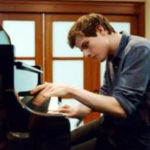
2. Edifier R1280T
The R1280T set from Edifier are packed with some pretty premium design features given their price-tag which gives a bit of an advantage over similarly priced bookshelf sized speakers. They are a heartily constructed powered speaker set, the active speaker has a layout of combination of drivers, connections and controls. The enclosure features a bass reflex port which has been calculated accurately by the folks at Edifier, to provide optimal bass, completely free of distortion.
The bass driver is 4” and the silk dome tweeter just 13mm, between them and their high-quality crossover circuitry they provide seamless smooth audio with crisp highs and an overall full range depth. The tone controls allow you to shape your audio preference by micro adjusting the treble and bass elements with the adjustable crossover digital signal processing. They can also be controlled remotely and muted at the touch of a button. The volume level always resets to a comfortable level when they are powered up.
They have dual RCA input to connect to multiple devices at once. They are wooden and have a touch of class about them.
Pros:
+ Bass reflex port.
+ Multi-hook ups.
+ Affordable price.
Why We Liked It - Wood composition is always better for bass in a speaker cabinets, this pair have versatile connections and allow for simultaneous use so they are a good set if you fancy keeping a turntable hooked up.
3. Sony SSCS5 3-way
Another very versatile model with exceptional drivers and rich acoustics is this fab 3-way class bookshelf speaker system from Sony. The set-up consists of a rigid Mica Reinforced Cellular woofer, tweeter, and super-tweeter.
The woofer measures 5.2” and boosts low-end frequencies powerfully, thanks to its mica-cellular diaphragm. The tweeter is 0.98” and the newly incorporated super-tweeter is 0.75” and has a very wide directional radius. Each are of a composite nature, they have precise acoustic tuning and ensure vocal definition. Rear sound pressure is eliminated by sound-absorbing felt. They feature optimized crossover components and with these upgrades, they are ultimately more pristine than ever before.
The cabinet design is very strong, it is ported and constructed solely from wood to dampen unwanted vibrations. They handle a recommended maximum of 100 watts and are affordably priced.
Pros:
+ Brilliant 3-way class system.
+ Super-tweeter incorporated for increased high frequency range.
+ 100 watt system.
Why We Liked It - The MRC woofer cones are incredibly durable, the cellular nature means they will not deteriorate as swiftly as a paper cone model. This new set feature some great improvements.
Volume - For bookshelf speakers, you can have access to a pretty good amount of volume if your unit has a sensitivity of over 90db. If you don't care about your bookshelf speakers' ability to reach such high volumes, you can save money on units that stay at or below 80db or so.

4. Edifier R1280DB
Up next a powered pair with built-in Bluetooth connectivity from Edifier. Essentially they have taken some of their best-selling models and given them a modern upgrade. Now they are equipped with the mod cons of optical, coaxial, and wireless inputs.
These powered bookshelf speakers feature easy access side panel controls located on the active speaker, giving users command of equalization as well as volume. It can also be controlled via its remote. The dedicated bass driver is a 4” composite cone woofer that works seamlessly in conjunction with its 13mm silk dome tweeter with crossover to provide studio quality audio that is natural and high def.
They have a wide frequency response and low impedance, thanks to their expert circuitry. They have a peak RMS of 42 watts combined.
Pros:
+ Wireless.
+ Optical and coaxial inputs.
+ Expertly calibrated enclosure.
Why We Liked It - They bring Edifiers expert audio to the forefront of modern wireless technology for a price that won't lighten your wallet too liberally.
5. Klipsch R-14M
Over to see what's on offer from Klipsch. We have reviewed several models from their Reference bookshelf series they make for marvelous models. They feature some high-end design assets such as their proprietary 90 x 90 Tractrix Horn technology. Which gives their aluminum Linear Travel Suspension (LTS) tweeter an edge over competitors in terms of their extended high-frequency response. The LTS method helps to minimize any distortion.
The dedicated 4” woofer is copper spun injection molded graphite which handles exceptionally well with a very little breakup and zero distortion. Paired with the LTS tweeter and advanced crossover technology they provide some of the best audio in their class. They handle around 90watts peak RS per speaker.
The enclosure features a rear-firing ported design which is flared to further minimize unwanted noise
it is black brushed polymer veneer.
Pros:
+ 180 watts.
+ Tractrix horn LTS tweeter.
+ High quality manufacturing.
Why We Liked It - The Klipsch reference series provides unbelievable value for money they are packed full of advanced manufacturing features in comparison to most in their class and price level.
6. Edifier R1700BT
If the wattage of the first edifier Bluetooth pair we looked seemed a little low for your needs then this set is the next step up in their series. They feature all the top-notch design aspects of the other set but handle a combine peak RMS of 66 Watts instead of 42.
They are active powered speaker pair and they have a slightly larger stature to go with their additional power. The bass driver is again 4” and built with an advanced mix of composite materials that have been researched, tried and tested. The tweeter has gone from 13m in size to 19mm to keep the same desirable clarity at a higher power output.
They have advanced digital signal processing and Dynamic Range Control protocols in place to ensure nominal distortion. The enclosure is all wood to dampen resonance and it incorporates a front facing bass reflex port, which to refresh you is flared and provides emphasized, optimal bass response.
The active speaker of the set has conveniently located dials for tone control as well as volume, giving users the ability to shape the equalization (treble and bass) of their audio mix.
Pros:
+ Dedicated woofer and tweeter.
+ 66 watts.
+ Reasonably priced.
+ Wireless connectivity.
Why We Liked It - They are easy to use, you can set and reset Bluetooth pairing, and even without the Bluetooth capabilities they are a fantastic pair of speakers in terms of quality audio.
7. JBL Arena B15
Another flexible solution would be this superb set of affordable surround speakers from JBLs Arena series. They are 2-way class and constructed from premium parts. The bass driver cone is made from poly cellulose rigid and highly responsive. They measure 5.5 inches and incorporate JBL patented High Definition Imaging waveguide technology developed for their legendary JBL M2 Master reference speaker.
The woofers are joined by a 25mm soft dome tweeter to effectively deliver a wide frequency response between the two. The crossover circuitry is high quality and between the two speakers, they deliver room-filling, well balanced full range sound. They are affordably priced and part of JBLs Arena system, although they will be compatible with most configurations.
For the best dynamic surround sound hook these guys up with 2-floor standing options a center channel L/C/R and a dedicated subwoofer.
Pros:
+ Compact.
+ Surround set.
+ Premium components.
Why We Liked It - The JBL Arena series makes for a great surround system, alone the bass on these guys is a little on the weaker side but that ought to be expected with their small footprints, paired with a sub they are awesome.
8. Polk Audio TSi100
Now for a look at the entry-level model on Polk Audios Tsi line, which shares more than just its stylish good looks with their top of the line Lsi series.
They are a fully equipped 2-way class pair. Their woofers offer super wide dispersion despite their 5.25” size they are dynamic balance drivers and are of a bi-laminate blended composition. They are teamed with a one-inch silk polymer dynamic balance tweeter. They have a good frequency response, though we consider the low end a little weaker than some. This is because they are designed exclusively to be part of a larger system set-up.
The handle a comfortable 20-100 Watts per channel and are priced at a level which makes buying the entire set-up an accessible possibility rather than a pipe dream. So an ideal choice for the dedicated home audio buff.
Pros:
+200 watts.
+ High performance.
+ Incomparable value for money in their class.
Why We Liked It - They are arguably one of the best sounding passive bookshelf speakers on the market, with models matching their definition typically costing much more.
9. Micca MB42
A lovely looking, passive pair sit in our penultimate position. They are priced very competitively and built to last, with high-quality components. They are a fairly compact design with a stylish look – classic black with soft bevels and rounded corners.
They feature a fantastic woven carbon fiber cone woofer, which is just 4” big, it is seated in a rubber surround to increase bass response performance. The ported enclosure also assists in the quest to deliver distortion-free bass. The higher frequencies are dealt with by the high performance 0.75” silk-dome tweeter, it has a filtering capacitor crossover.
Given its low price, these bad boys incorporate some very high-quality components. Their enclosure is covered in wood-grain vinyl and they are 9.5” high, with a space-saving footprint of only 5.8” X 6.5”. They have a reasonable frequency response and a power handling of 75 watts each.
Pros:
+ Lightweight and compact.
+ 150 watts per pair.
+ Manufactured in the USA.
+ Low price.
Why We Liked It - Whilst these are obviously not a high-end set, they outperform the majority of similarly priced passive models, and even some more higher priced contenders.
10. Edifier R980T
Before we move on to our buyers guide we are taking a quick peek at the low end of the Edifier bookshelf powered speaker series. Whilst the other Edifiers we have looked at undoubtedly top this set does make for an obvious contest for the title of a best low priced bookshelf speaker.
They have a tiny size to go with their price tag but resonate with a much larger presence and depth.
Edifier knows what they are doing and their research gets incorporated into even their cheapest designs. This set feature an advanced flared bass reflex port to counter problems common with small sized amplification. The flare helps to achieve optimal bass quality, calibrated for their compact nature.
Each speaker is equipped with a 4-inch bass driver and a 13mm tweeter. They cope with a combined peak RMS power of 24 watts.
They are a classically stylish, their all wood design accentuates a more natural acoustic sound quality and deadens unwanted vibration for noise-free audio.
Pros:
+ Compact.
+ Low priced.
+ All wood.
Why We Liked It - They are well rounded with great circuitry and the best quality budget components. They benefit from tech advances other Edifier speakers rely on, all in all a great cheap speaker set.
2-way vs. 3-way - A 2-way speaker includes tweeters and woofers, to access particularly high-end and low-end frequencies, respectively, whereas a 3-way speaker includes the same two parts and the addition of a mid-range driver that can access a cleaner sound for the frequencies in between. A 3-way speaker will be more expensive but will deliver a higher quality sound.

Bookshelf Speakers Under $200 Buying Guide
What to look for in Bookshelf Speakers under $200?
In order to know what to look for in a speaker, we need to understand a little more about how they function to separate the important features from the fluff.
A speaker works by turning the electromagnetic waves it receives into sound-waves. To do this they need a stiff cone driven by a voice coil. The cone is seated inside of a magnetic field. When a current is introduced the coil pushes and pulls the cone and this is what creates the waves.
Speaker will usually comprise of multiple kinds of drivers those for high pressures and those for lower pressures to deal with both the higher and lower frequencies they will be exposed to.
The enclosure size, design and the materials used to construct are key because they can dramatically affect the performance of the drivers. The best drivers will sound awful in the wrong enclosure, likewise, a good enclosure can improve a cheap speaker tenfold.
This is because they must separate the sound waves projected forwards from those at the rear so that they can't cancel one another causing them to be out of phase with one another giving a bad bass response. To tackle this head on this most speaker enclosures adopt a bass reflex design over a closed box design.
Bass reflex enclosures as sometimes referred to as ported or vented boxes or even reflex ports. They essentially employ a hole with a section of tubing or pipe to maintain a consistent fresh air intake. To settle a myth; If they are built accurately they can actually be louder than a sealed enclosure.
The equation for calculating the best enclosure size for the given drivers is complex and takes into account the size of the diaphragm of the driver, the weight of the parts, mechanical resistance, voice inductance, the volume of air and much more.
Wood is always preferable to plastic, it has better acoustics and it also dampens vibrations that can inhibit the audio clarity. Plastic speakers tend to rattle with loud decibels or low notes.
So what have we learned, hopefully, if you have followed us you will have ascertained we are looking for wooden, ported enclosures with at least a 2-way if not 3-way class. If you are going to shop for a passive pair we would say try for 3 way if they will be a standalone set. If you are shopping for a passive pair to add to your system or build a new system from scratch 2- way will probably be satisfactory as the other speakers will be more tailored to specific parts of the frequency spectrum.
Bookshelf speakers are typically meant to be a left and right and set at about ear level when seated. As we have been highlighting bookshelf models in this article some have a little lackluster low end, so you will need to think about a dedicated subwoofer if you like your bass thumping.
Below the $200 dollar mark, it is unfair to have unrealistic expectations that being said, some of the top manufacturers manage o include some premium design specs and tech into their lower-priced lines which is evident with the Polk Audio and Edifier products we have looked at.
Where to buy budget bookshelf speakers under $200?
With the electronic industry booming, and the world at our fingertips, you needn't leave your bed to shop for the best budget bookshelf speakers. There really are a multitude of models on the market, so armed with your newfound knowledge on bookshelf speakers you shouldn't have a problem sniffing out a set that does the trick. All of those we have reviewed are available on Amazon.com and we have linked each for you to make it even easier.
Can you get good cheap bookshelf speakers?
We would like to think that those we have reviewed here speak for themselves, but in short yes. As we said the electronics industry is constantly changing and evolving. the manufacturers are always competing for the end result of this is that consumers get a lot of ore their money these days than was ever previously possible.
The online market brings with it a more accessible reputation, and a large pressure for companies to satisfy their customer base. Fortunately for you, it means you can find a great deal shopping for most audio products, if you know what you are looking for and understand the jargon you are looking at within the product specs.
We are confident that those we have chosen to write about are the cream of the crop at this price level. Their components and audio quality unmatched by many similarly priced products out there. Of course, the real audiophiles out there might want to consider parting with a bit more capital for something a bit more pristine.
Conclusion
Decide what you want your bookshelf speakers for, think about your power requirements and consumption. When you know if you re shopping for an active or passive pair, you can begin to narrow down accordingly.
Of course, in today's article budget has been key but most of those we have looked at today sit somewhere around the middle of our budget limitation. If cash is of a concern for you we would recommend the Micca MB42 pair as our lowest priced passive set of bookshelf speakers.
When shopping on a restricted budget always look for the best your money can buy, compare what is available so you understand whether your deal is a steal. We trust our buyers' guide has given you plenty to consider before you purchase your pair of budget bookshelf speakers.
Expert Tip
When shopping on a lower budget, try to go with a name you know. Top brands can often provide cheaper alternatives without compensating on the quality as much as smaller companies sometimes have to
Did You Know?
The first speaker design was invented and established in the early 1950's and the manner in which it functions has changed very little since.
If you've enjoyed this review by Music Critic, please leave a positive rating:

